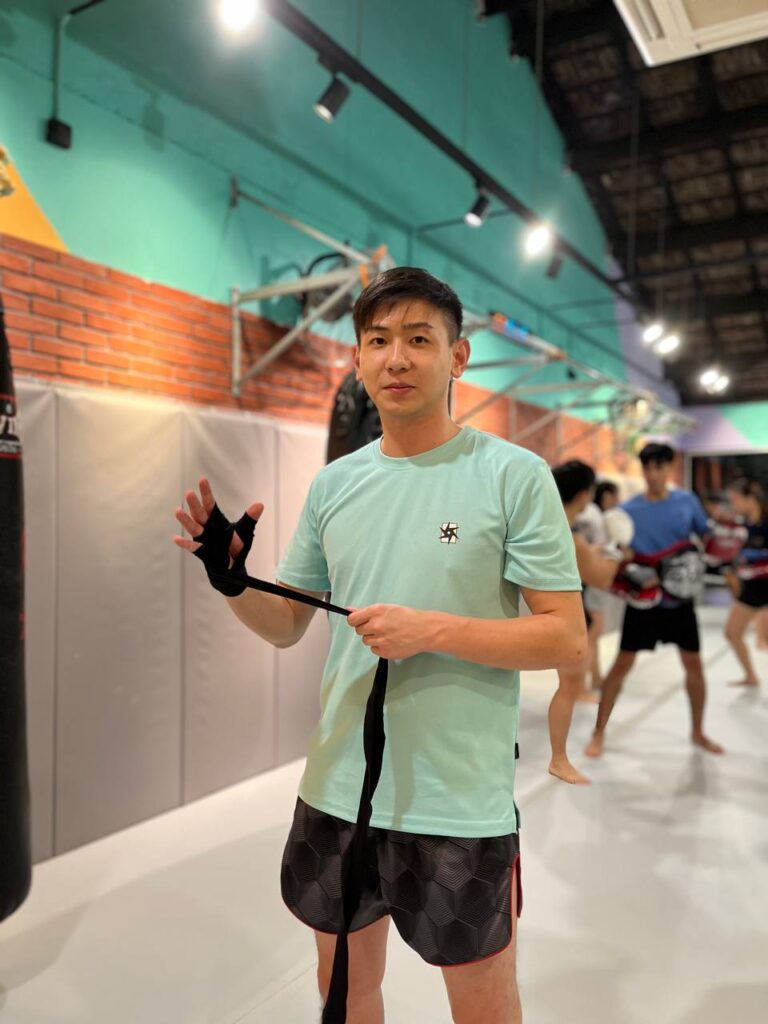Developing Your Defence in Boxing

In boxing, having a solid defence is just as important as throwing offence. A good blend of both is the key to being an effective boxer. Let’s explore the essential defensive techniques every boxer should know.
- Block: Shielding against punches. The first defensive technique that most beginners start out with is blocking.
-
- Blocking straights: This involves using your gloves or arms to shield you from incoming straight punches (jab or cross) to your head and body. Align the padding of your gloves above your eyebrows with you palms facing you. By tucking your elbows in and activating your core to absorb the impact, a lot of the damage is negated.
- Blocking hooks: Raise the padding of your glove to your temple to block the side of your head from incoming hooks to the head. A good, stable block not only protects you but also allows you throw powerful counterattacks immediately once there is an opening.
- Blocking body shots: From your fighting stance, tuck your arms in close to you and tilt slightly towards the incoming punch so that your arms can cover the side of your ribs and torso. A clean shot to the body can do tons of damage and end a fight, so ensure to keep your block tight and lock your core down.
- Head movement: Evasive manoeuvres to dodge punches.
-
- Slip: Most commonly used when your opponent throws straight punches (jab or cross). To execute the slip, rotate your body slightly and move your head to the side just enough to dodge the incoming punch. For you to counter quickly and deliver damage after the slip, good balance is key, this can only be achieved if your head movement is not too excessive. Coordination and composure are necessary to master the slip.
- Roll: Also known as “bob and weave” is usually used to defend against your opponent’s hooks. To execute a roll, bend your knees and twist your shoulders so that your head travels under the punch in a “U” shape and back up on the other side. It can also be used to set up overhand punches which are hard to see coming.
- Pull: Leaning back just enough to be out of punching range when your opponent attacks. This evasive technique is effective against most punches to the head. This technique creates a momentary opening for a counter attack when their punch falls short.
- Parry: Redirecting your opponent’s punches. In a short sharp diagonal movement with your palm, you can deflect your opponent’s straight punches to your head. A well-timed parry can disrupt your opponent’s balance and leave them vulnerable to attack.
. - Footwork: Managing distance and angles.
-
- Step back: Take a small step or hop backwards just out of your opponent’s range. This allows you to avoid getting hit and resets your balance for a powerful counter punch.
- Circle: To move around your opponent in a clockwise or anti-clockwise direction. It can be used after you throw a punch too, to get out of your opponent’s line of fire. This is especially effective against a boxer with strong forward pressure, as it helps you create some distance and breathing room.
In conclusion, boxing defence is an intricate dance that requires a combination of technique, timing, and composure. A strong defence can be achieved when you are able to seamlessly blend these different defensive techniques, making your opponent miss and waste energy. Relying on just 1 or 2 of these techniques will make you very predictable thus more open to attacks. Start with blocks and then slowly introduce more evasive movements as you get more comfortable. Remember to stay calm as it will allow you to make better defensive choices.
– Coach Yij @cowsgo_rebel






